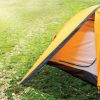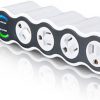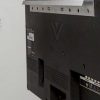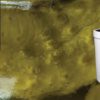You’ve probably heard the rule of 3s for survival: You cannot survive more than 3 minutes without air, 3 hours without shelter, 3 days without water, or 3 weeks without food in an extreme situation.
Having a plan for emergency water is even more important than emergency food storage, and it’s so easy to prepare. In order to prepare your family for ice storms, long-term power outages, blizzards, and more disasters, you’ll want to have a water barrel ready – not just a case of water bottles in the basement.
How Much Water do you Need?
According to Ready.gov, you should prepare 1 gallon of water per person, per day, for drinking and keeping clean. Make sure and drink half a gallon of water per day. Children may require more water, as well as mothers and medical emergencies. In a disaster during a Utah summer, that gallon could double.
Water really is more important than food in a disaster situation – not only is being hydrated important for your body to function properly, but water will also help keep your mind sharp so you can make the best decisions for your family in a crisis.
Ready.gov recommends you keep at least a 3-day supply of water – the Red Cross recommends 2 weeks. That means a family of four needs 12 gallons, minimum, for 3 days – or 56 gallons for 2 weeks.
Water Storage Drums and Pump
Here are our picks:
55-Gallon
The 55-gallon barrel is a great size for couples and families. Our Emergency Preparedness buyer Jean Dimick has 7 of these barrels in her laundry room. That’s plenty of water for her family, and you just don’t ever know how long city lines might be down. And it’s enough to share with the neighbors, too.
The great thing about keeping them in the laundry room is it’s easy to drain and refill the barrels there!
Siphon Pump
Use this siphon pump to keep your water within reach. You can fill cups and bottles from your water barrel using this siphon pump – you could also use a siphon hose.
250-Gallon Super Tanker
If you have a large family, or you’re expecting to be a point of refuge for several families, this Super Tanker. This is great if you have a heated garage or have high ceilings where you can fit this tall water barrel.
What should you look for in Water Barrels?
There are 2 big points to look at in storing water.
First, you want to make sure your drums are opaque. We only carry the blue opaque drums because white drums are more translucent, which means algae could grow in them because of letting in sunlight. For safety, you want to stick with the blue drums.
Second, you want to think about where you’re going to store them: indoors or outdoors? In the garage, basement, or extra room? You’ll want to make sure your ceilings can accommodate the option you choose.
Make sure you pick the right room. Whatever room you choose, make sure to have a wooden base made from 2x4s or a small pallet so the water doesn’t pick up the taste of the cement floor. Some people have even built wooden cradles for their water barrels.
Also, only store your water in a heated garage, not one that will get cold in the winter. That’s because although the water barrels can move slightly, they aren’t built to have the water freeze and then thaw and expand. It’s nice to wake up to a dry garage!
Final Notes about Water Storage
Before using these drums, make sure to clean them thoroughly with dish soap and water, rinsing very well. For safety, you should replace the water in these drums every 6 months.
Some people add a bit of Clorox or water purification tablets to their stored drinking water to prevent bacteria growth. However, in most municipalities, there’s already enough chlorine in the water to keep it safe – and there’s not really enough chlorine in Clorox to make an impact. Consult your city’s water records and choose a plan for your own method of storing water for a disaster.
If you have water you’re not too sure is fresh, these Water Purification tablets from Coghlan’s are a good way to clean the water. And this water treatment will help the water taste better.
Think about it: do you know how to drain your water heater? In a disaster, that’s another source of water, and you can use that water for cleaning and washing instead of the good drinking water you’ve saved.
For More about Water Storage:
Ready.gov
American Red Cross (PDF download)
Have questions about water storage? Have a great method of your own to share? Let us know in the comments below.























































































































































